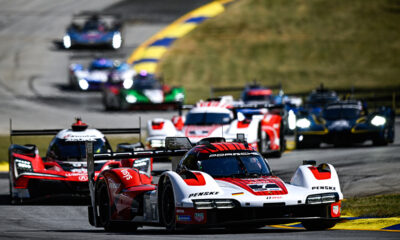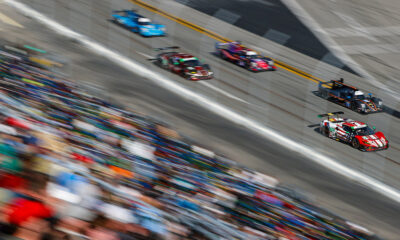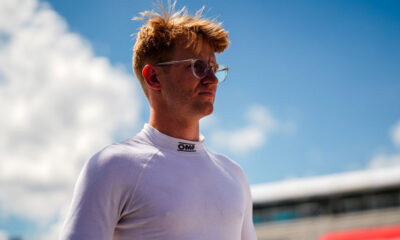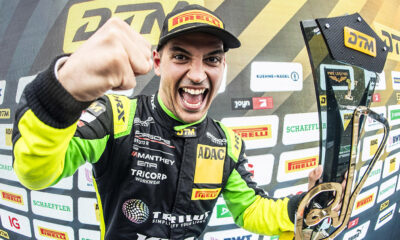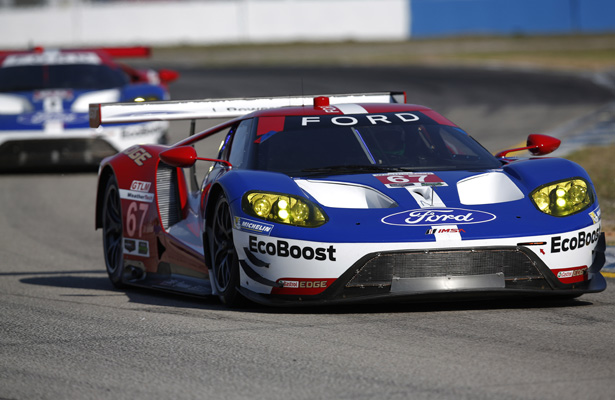
Photo: IMSA
For Ford Chip Ganassi Racing, this weekend marks a historic occasion for the American factory program, as all four of its Ford GTs will be in action between two races on different corners of the globe, but each in pursuit of the car’s elusive first class victory.
While the IMSA team will be taking part in the third round of the WeatherTech SportsCar Championship on the streets of Long Beach, some 5,500 miles away in Silverstone, England, the UK-based, Multimatic-run operation will be making its FIA World Endurance Championship debut.
In what may sound like a logistical nightmare, especially for a first-year program, the level of cooperation that’s gone on between both operations has played massive benefits already, despite some resources being stretched this weekend.
“As far as the race teams themselves go, we have structured the two teams to be autonomous, so both teams running at the same time isn’t an issue,” IMSA team manager Mike O’Gara told Sportscar365.
“The issue really lies with the companies that support us. Those include the Ford Performance engineers that help us with simulation and chassis setup as well as the Roush Yates guys that do our engine tuning.”
At Long Beach, the O’Gara-led squad will have 24 CGR crew members, four Ford engineers, three Roush Yates engineers and two representatives from Multimatic, while the WEC effort, headed up by former Prodrive boss George Howard-Chappell, will feature 20 crew, six Ford reps and four Roush Yates engineers.
While team owner Chip Ganassi and managing director Mike Hull will both be in Long Beach, to also oversee CGR’s four-car Verizon IndyCar Series effort, Ford Performance Director Dave Pericak will be in Silverstone to witness the program’s European debut.
Owing to what Pericak has called a four-car, single-team approach, members of the upstart WEC squad supported the IMSA team in the car’s competition debut in January’s Rolex 24 at Daytona, including Ford WEC boss Howard-Chappell.
“There was a very strong overlap between the U.S. team and the European team,” Howard-Chappell told Sportscar365. “There’s constant communications. There weren’t so many people at Sebring because of the preparation that was going on for our activity here.
“Depending on each half-schedules, there’s either a load of people or not very much. But we can live with that. When there are non-clashing events we can overlap a little bit more. When there are clashing events, there are no issues.
Despite there not being any overlap in personnel this weekend, both teams will be in regular communication, even with the eight-hour time difference between California and the UK.
O’Gara said each team’s data from every session will be posted to a secure download site, while engine and chassis support personnel will also be trading setup info and engine mapping data in order to maximize the performance of the four cars, which run to nearly identical specifications in the two series.
“We will be in constant communication with the WEC team,” O’Gara said. “We know that in order for all four cars to be successful, we need to share as much information as possible.
“That information not only includes problem areas that need to be addressed, but also things that improve the cars’ handling, fuel economy, drivability, etc.
“That’s an approach that we have used with our IndyCar team for the last 20-plus years with much success, so it’s natural to carry on working that way with the IMSA/WEC teams.”
Even without the first WEC race having been run, O’Gara said the IMSA team has already reaped the benefits of having the additional data to work from.
The WEC team took the opportunity to validate updated components at a test in Motorland Aragon last month, prior to the Mobil 1 Twelve Hours of Sebring, which O’Gara credits as playing a major part in their trouble-free run in the around-the-clock Florida endurance classic.
“We really feed off each other,” he said. “If one team has an issue, the other can test a solution within 24 or 48 hours. It was worked in both directions. I attribute our lack of issues at Sebring directly to this.”
There’s even been overlap in drivers, with WEC full-season pilot Stefan Muecke joining Richard Westbrook and Ryan Briscoe in the No. 67 Ford at Daytona and Marino Franchitti having played a significant part in the car’s U.S.-based development last year.
“We are one team and that’s true,” Franchitti told Sportscar365. “There’s total openness on everything. I was speaking to [Scott] Dixon on the phone after Sebring, getting his feedback on what he thought.
“On the team side, the drivers are speaking, everyone’s trying to accelerate this program along as fast as we can.
“We can’t get enough laps under it or learn enough as an organization. Whether we’re in Indianapolis or Greatworth [UK], the information is flowing back and forth constantly.”
While the teams may be racing on two different continents this weekend, they’ll soon be working side-by-side, with a four-car entry at the 24 Hours of Le Mans, in what will be the ultimate display of its single-team mentality.



















